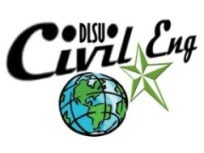 |
| The Joint Survey Team (Dr. De Leon 3rd from left, standing) |
Dr. Mario De Leon, Associate Professor in the HWR Division of the Department joined a Survey Group on 2013 Typhoon Haiyan on Dec. 5-10, 2013. The survey was organized
by the Department of International Development Engineering of Tokyo Institute
of Technology headed by Dr. Hiroshi Takagi together with Waseda University,
University of Tokyo and Toho University in Japan. The purpose of the survey is
to conduct actual investigation on the extent of storm surge that hit the areas
of Leyte and Samar specifically Tacloban,
Palo, Tanauan, Abuyog, Dulag, Tolosa, Basey, Balangiga, Guiporlos, and Quinapondan. The field survey was conducted to document evidences of storm
surge such as water marks, traces of damaged buildings and vegetation and to
assess the extent of actual storm surge height. Interviews from the local
community and government agencies were also done to gather and validate data
and information. The field survey also supports and confirms the numerical
simulation of storm surge on November 8 in Leyte and Samar
that Dr. Takagi had earlier investigated.
The team that conducted the field survey from December 5-11,
2013 was composed of professors, consultants, graduate students engaged in
coastal engineering with the participation from Japan NHK TV news team. Prof. Tomoya Shibayama from Waseda University was the Team Leader, with Prof. Hiroshi
Takagi as the Assistant Team Leader, also joined by Prof. Ryo Matsumaru of Toho
University, Prof. Miguel Esteban of University of Tokyo and Prof. Nguen Danh Thao of Ho Chi
Minh City
University Leyte was also in
coordination with DPWH Region VIII thru Dir. Rolando Asis. During the visit at
DPWH regional office, Asst. Secretary Soguilon together with Asst Regional
Director Tabacon gave a short briefing on the areas greatly affected by the
typhoon.
Actual field surveys in Leyte and Samar
took place from December 5-9, 2013. The areas covered in Leyte were Tacloban, Palo, Tanuan, Abuyog,
Dulag, Tolosa, MacArthur, while in Samar were the areas in Basey, Balangiga,
Guiporlos, and Quinapondan. Based on the visual traces of water
marks, damaged buildings, vegetation measured with reference to the corrected sea
level during the typhoon event and interview of the local people, the storm
surge heights were in the range of 2 to 7m. The northern part of Cebu was also
surveyed on December 10, 2013 particularly in the areas of Medellin , Bogo and Bagay where the storm
surge height was estimated at less than 2m.
On December 12, 2013, the Joint Survey Team from Japan side
represented by Dr.Takagi, Dr. Matsumaru, Dr. Kumagai, Mr. Mikami visited DLSU
for a personal courtesy to the Dean of GCOE, Dr. Rosemary Seva, CE Department
Chair Engr. Jason Ongpeng and some CE Department faculty and staff. A presentation was made on the team’s field survey in the different areas and the
initial results and findings on storm surge height ranging from 2 to 7m were
also shared to the group as well as the overall experience on the
scenarios and aftermath of the areas and people struck by typhoon. Delegates
from Tokyo Institute of Technology, Toyo
University , Waseda University
The output of the Joint Survey is to provide assistance and
contribution in the coastal disaster mitigation planning in the Philippines as well as in Japan and in
other countries that experience coastal
flooding. A journal article is also envisioned to be realized. At present, a
manuscript was already submitted to one journal for review. It is also anticipated
that a seminar will be conducted by the joint survey team together with government
agencies and stakeholders sometime in December 2014, a year after the Typhoon
Haiyan, where DLSU is identified as the proposed venue for the seminar.
- Article written by Dr. Mario De Leon




.jpg)





No comments:
Post a Comment